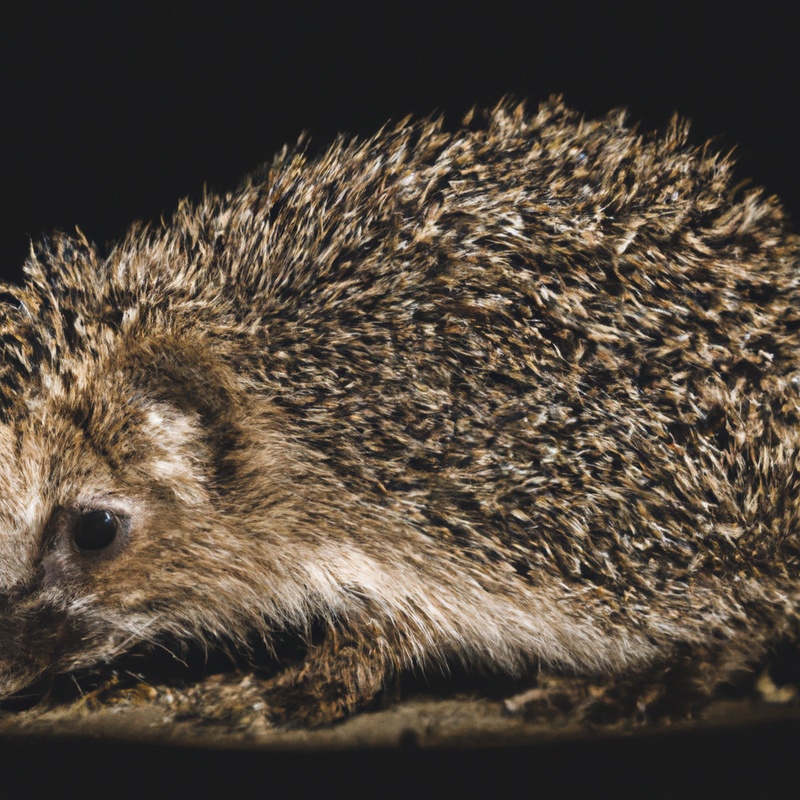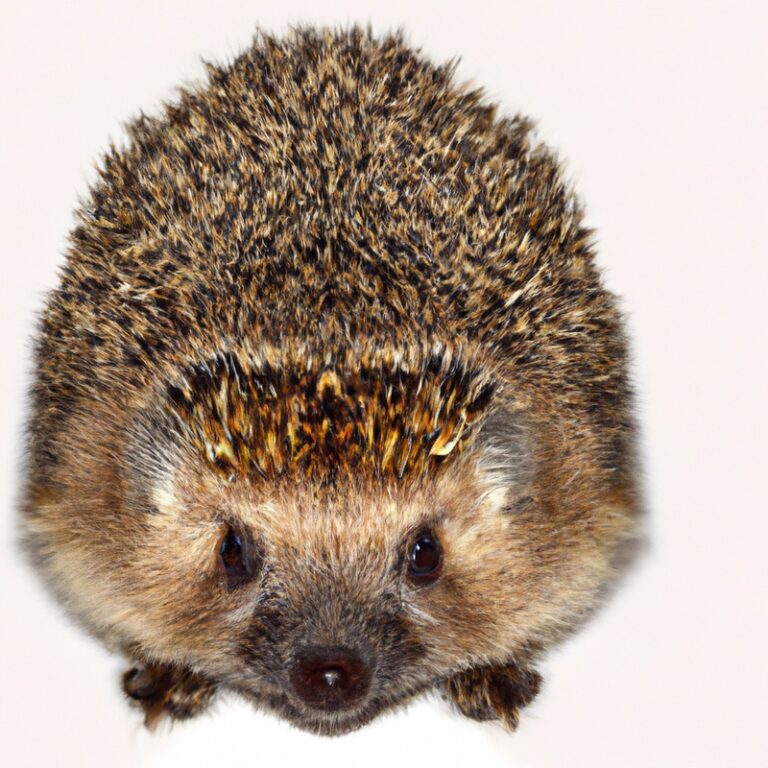How Do Hedgehogs Adapt To Different Types Of Gardens?
Key Takeaways:
- Hedgehogs have the ability to adapt to various types of gardens based on factors such as food availability, shelter, and water sources.
- Providing a diverse range of foliage, natural cover, and access to water can encourage hedgehogs to adapt and thrive in different garden environments.
Are you curious about how these adorable little creatures, hedgehogs, manage to thrive in various garden settings?
Well, you’re in for a treat! Hedgehogs are nature’s masters of adaptation, and their ability to adjust to different types of gardens is truly remarkable.
These spiky animals have found ingenious ways to make the most out of their surroundings, whether it’s an urban, suburban, or rural garden.
In this blog article, we’ll explore the fascinating world of hedgehog adaptability, uncovering their habitat requirements, dietary needs, and the specific adaptations they employ for each type of garden.
Get ready to be amazed by these resilient little creatures!
| Adaptation | Examples | |
| Physical Adaptations | Thick spines | Protects against predators |
| Camouflaged fur | Blends with environment | |
| Behavioral Adaptations | Nocturnal activity | Helps find food and avoid heat |
| Hibernation | Conserves energy during winter | |
| Dietary Adaptations | Flexibility in diet | Feeds on insects, small animals, and plants |
Understanding Hedgehogs and their Adaptability
Hedgehogs are highly adaptable creatures that can adjust to various environments and habitats. Their ability to adapt is key to their survival and success.
Hedgehogs: Nature’s Adaptable Creatures
Hedgehogs are truly adaptable creatures.
They have amazing survival skills that allow them to thrive in a variety of habitats.
These spiky little mammals can easily adapt to different types of gardens.
Hedgehogs are omnivorous, so they can adjust their diet based on the available food sources.
They have sharp teeth and strong jaws that help them eat a wide range of food, including insects, worms, snails, and even small vertebrates.
Hedgehogs also have excellent night vision and a keen sense of smell, which helps them navigate and find food in different environments.
Their spines serve as a natural defense mechanism against predators, making them well-suited for adapting to different garden habitats.
The Role of Gardens in Hedgehog Habitats
Gardens play a crucial role in hedgehog habitats.
They provide a source of food, shelter, and water for these adorable creatures.
Hedgehogs are drawn to gardens because they offer a variety of insects, slugs, and worms to eat.
The vegetation and clutter in gardens also provide hiding places for hedgehogs to rest and escape from predators.
It’s important to create hedgehog-friendly gardens by avoiding the use of chemicals, providing access through fences, and creating safe spaces for them to nest.
By making small changes in our gardens, we can help ensure that hedgehogs have a suitable habitat to thrive in.
Factors Influencing Hedgehog Adaptability
There are several factors that influence hedgehog adaptability to different environments.
One of the key factors is the availability of food sources.
Hedgehogs are insectivores, so gardens with a wide variety of insects and invertebrates provide a suitable habitat.
Shelter is another important factor.
Gardens with dense vegetation, hedgerows, and compost piles offer hiding places for hedgehogs.
The presence of water sources such as ponds or shallow dishes is also beneficial.
Finally, the level of human intervention in the garden, such as the use of pesticides or removal of natural habitat, can impact hedgehog adaptability.

Hedgehog Habitat Requirements
Hedgehog habitat requirements include access to food sources, nesting opportunities, and hedgehog-friendly landscapes in gardens.
Hedgehog Diet and Food Sources in Gardens
Hedgehogs have a diverse diet and can adapt to different types of gardens.
They primarily feed on insects, such as beetles, worms, and caterpillars.
Additionally, they consume slugs, snails, and spiders, which can help control pest populations in your garden.
Hedgehogs are also known to eat fruits, berries, and even small vertebrates like mice.
To attract hedgehogs to your garden, provide a variety of food sources, including leaves and logs for shelter, water for drinking, and an unmowed area to encourage insect activity.
Providing Shelter and Nesting Opportunities
To provide shelter and nesting opportunities for hedgehogs, you can create hedgehog houses or use log piles, leaf piles, or dense vegetation. These spaces offer protection from predators and harsh weather.
Ensure there are small entrances and provide bedding materials like dry leaves or straw.
Avoid using chemicals in your garden, as they can harm hedgehogs. Also, check for hedgehogs before mowing or removing garden debris to avoid disturbing their nests.

Creating Hedgehog-Friendly Landscapes
To create a hedgehog-friendly landscape, here are some simple tips:
- Provide shelter: Make sure there are areas with dense vegetation, such as bushes or hedges, where hedgehogs can hide and build nests.
- Add water sources: Leave out shallow dishes of fresh water for hedgehogs to drink from. Avoid using ponds or deep bowls that they may struggle to escape from.
- Avoid pesticides: Limit the use of chemicals in your garden, as hedgehogs can be harmed by pesticides. Instead, opt for natural pest control methods.
- Create highway gaps: Hedgehogs roam gardens at night, so it’s important to keep pathways and fences low or provide gaps so they can freely move between gardens.
- Leave food out: Hedgehogs will appreciate a supply of food, such as wet cat food or specially made hedgehog food. However, avoid feeding them bread or milk, as these can be harmful.
By making these small changes to your garden, you can help create a welcoming and safe environment for hedgehogs to thrive.
Hedgehog Adaptations to Different Types of Gardens
Hedgehogs have unique adaptations that allow them to thrive in various types of gardens, including urban, suburban, and rural environments.
Adaptations for Urban Gardens
In urban gardens, hedgehogs face unique challenges but can still adapt and thrive.
Here are some key adaptations for urban gardens:
- Accessible food and water sources: Providing hedgehogs with easily accessible food and water can help ensure their survival. Placing shallow dishes of fresh water and leaving out hedgehog-friendly food, such as wet cat food or specialized hedgehog food, can support their dietary needs.
- Safe shelter options: Urban gardens often lack natural shelter options, so creating hedgehog-friendly shelters is important. Providing hedgehog houses or piles of logs and leaves can give them a safe place to rest and hibernate.
- Wildlife-friendly garden design: Creating a wildlife-friendly garden benefits hedgehogs and other creatures. Planting native flowers and shrubs, avoiding chemical pesticides, and providing areas of long grass and leaf piles can attract insects and small prey that hedgehogs feed on.
- Minimizing hazards: Urban environments can expose hedgehogs to hazards like roads and fences. Creating hedgehog-friendly access points, such as hedgehog holes in fences, can help them move safely between gardens. Checking for hidden dangers, like uncovered drains or exposed wires, can also protect hedgehogs.
Remember, each urban garden is unique, so adapting these suggestions to your specific space will support hedgehog populations and encourage their presence in your garden.
Adaptations for Suburban Gardens
Hedgehogs have several adaptations that allow them to thrive in suburban gardens.
One important adaptation is their ability to utilize a variety of food sources.
They are omnivorous and will eat insects, snails, slugs, fruits, and even bird eggs.
Additionally, hedgehogs can navigate through small gaps and under fences, allowing them to move freely between gardens.
They also create nests using leaves, grass, and other materials found in the garden for shelter and protection.
Providing ample vegetation, water sources, and safe spaces will attract and support hedgehogs in suburban gardens.
Adaptations for Rural Gardens
In rural gardens, hedgehogs have a few key adaptations to help them thrive.
Firstly, they prefer areas with tall grass and shrubs, providing ample hiding spots.
Secondly, a source of freshwater, like a small pond or dish, is important for their hydration.
Thirdly, leaving areas of the garden untouched, such as brush piles or log piles, provides them with shelter and nesting sites.
Additionally, avoiding the use of pesticides and creating safe wildlife corridors can further support hedgehogs in rural gardens.
Tips for Encouraging Hedgehogs in Your Garden
To encourage hedgehogs in your garden, provide natural food and water sources, avoid harmful substances and hazards, promote wildlife corridors and connectivity, and educate and involve the community.
Natural Food and Water Sources
Hedgehogs rely on natural food sources like insects, worms, slugs, and snails, so it’s important to have a diverse range of plants in your garden to attract these creatures. Avoid using pesticides, as they can harm hedgehogs and their food sources.
Additionally, providing a fresh water source, like a shallow dish, can help hedgehogs stay hydrated.
Remember to keep the dish clean and filled regularly.
Avoiding Harmful Substances and Hazards
To avoid harming hedgehogs in your garden, it’s important to be mindful of the substances and hazards that can pose a threat to them. Here are some key tips:
- Keep pesticides, herbicides, and other chemicals away from hedgehog-friendly zones.
- Avoid using slug pellets or opt for wildlife-friendly alternatives.
- Remove any litter or debris that could potentially entangle or injure a hedgehog.
- Check for open drains or holes where hedgehogs could get trapped and block these off.
- Make sure your garden is free from any sharp objects or tools that could harm a hedgehog.
Remember, creating a safe environment for hedgehogs is crucial for their well-being.
Promoting Wildlife Corridors and Connectivity
Promoting wildlife corridors and connectivity is essential for maintaining biodiversity and supporting healthy ecosystems. By creating interconnected spaces, we can allow wildlife to move freely and access vital resources such as food, water, and shelter.
Planting native vegetation, maintaining green spaces, and avoiding the use of pesticides can all contribute to the creation of wildlife corridors.
Additionally, reducing barriers such as fences and roads can help improve connectivity between habitats. Let’s work together to create welcoming spaces for our furry friends!
Educating and Involving the Community
To educate and involve the community in hedgehog conservation, we can organize workshops on hedgehog-friendly gardening, emphasizing the importance of providing food, water, and shelter. We can also collaborate with local schools and create educational programs for children that raise awareness about hedgehogs and their habitats.
Engaging the community through social media platforms and organizing community events like hedgehog walks can further promote hedgehog conservation efforts.
By working together, we can ensure a safer and more welcoming environment for these adorable creatures!
Frequently Asked Questions
Do hedgehogs eat pests in the garden?
Yes, hedgehogs do eat pests in the garden.
They are natural predators of various garden pests, including slugs, snails, insects, and worms.
Hedgehogs have a voracious appetite for these creatures, helping to keep their populations in check and protect your plants.
Their diet primarily consists of these pests, making them valuable allies for gardeners in managing pest problems.
By providing a hedgehog-friendly environment with shelter and access to food and water, you can encourage them to frequent your garden and help control pests naturally.
Can hedgehogs climb fences and walls?
Yes, hedgehogs are quite skilled at climbing fences and walls. Their sharp claws and strong legs allow them to scale obstacles with relative ease.
They are incredibly adaptable creatures and can navigate various types of terrain, including vertical surfaces.
So if you have a hedgehog visiting your garden, don’t be surprised if you spot it exploring the heights of your fences or walls!
How can I attract hedgehogs to my garden if I live in an urban area?
To attract hedgehogs to your urban garden, there are a few simple steps you can take.
Firstly, create a welcoming habitat by providing dense shrubs and a variety of plants.
Secondly, leave areas of your garden wild and avoid using pesticides, as hedgehogs rely on insects for food.
Thirdly, consider installing a hedgehog house or providing a pile of leaves as a cozy shelter.
Finally, make sure to keep a water source available.
Are hedgehogs harmful to the garden?
Hedgehogs are not harmful to the garden. In fact, they can be quite beneficial.
Hedgehogs are natural pest controllers and help to keep the garden free from slugs, snails, and insects.
They have a diet that consists of harmful garden pests, helping to maintain a balanced ecosystem. So, if you have hedgehogs in your garden, consider yourself lucky!
Final Verdict
Hedgehogs are incredibly adaptable creatures that can thrive in various types of gardens. Their ability to adjust to different environments is influenced by factors such as food availability, shelter options, and the presence of hazards.
To encourage hedgehogs in your garden, provide natural food and water sources, avoid harmful substances, and create wildlife corridors.
Additionally, educating and involving the community can help foster a hedgehog-friendly habitat. Remember, hedgehogs play a valuable role in pest control and are not harmful to your garden.
By implementing these tips, you can create a welcoming space that supports the well-being of these charismatic creatures.








